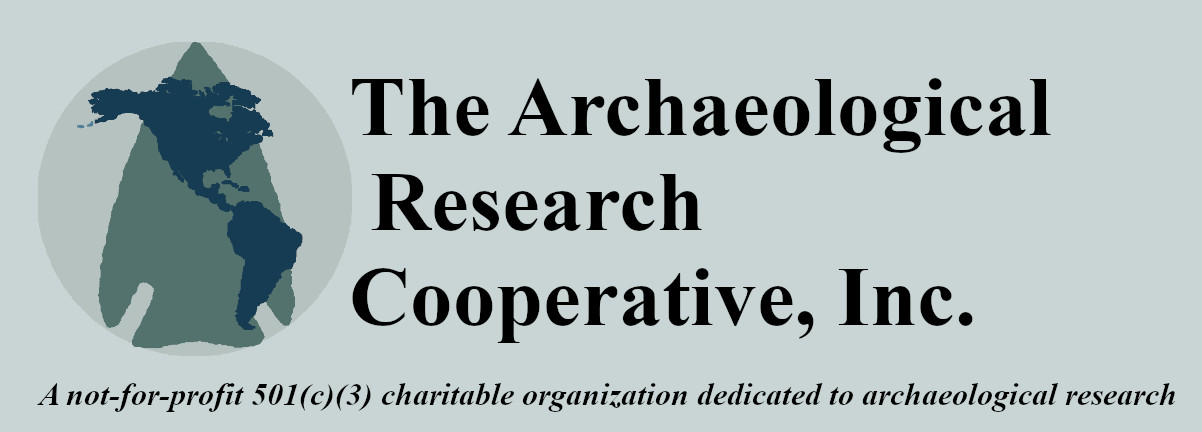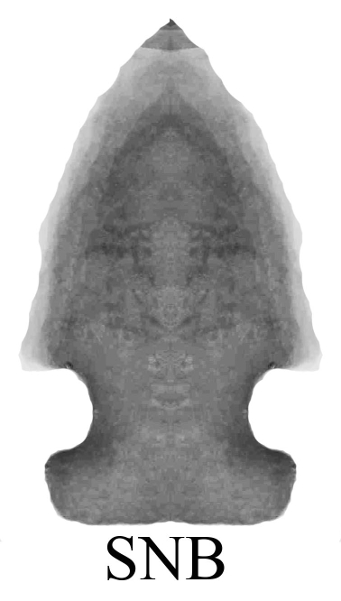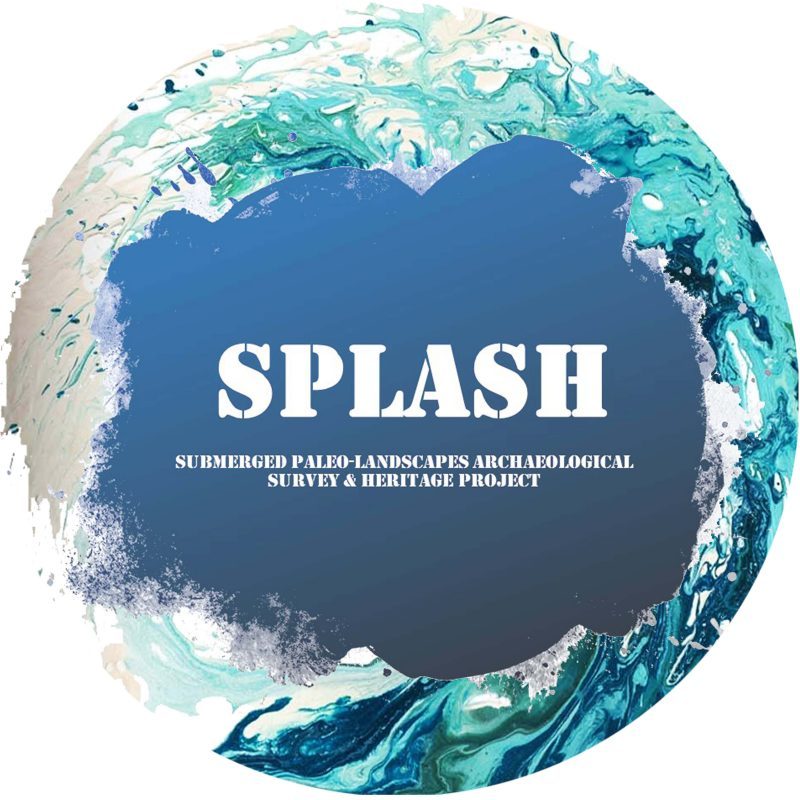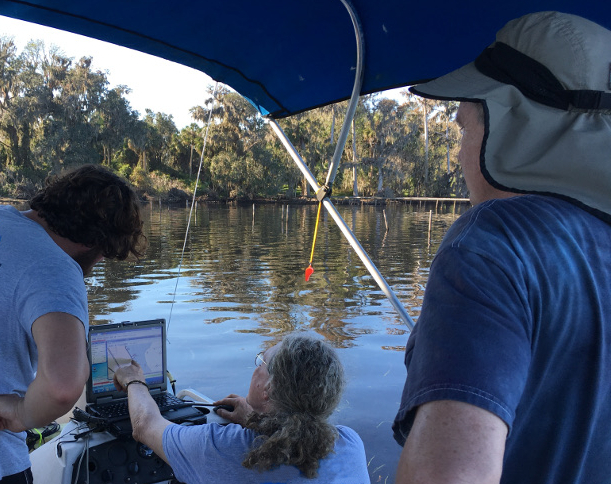REFERENCES USED TO CONSTRUCT THE FAUGHT ISKM POSTER
References used for the “Beringia is Dead” series of maps
Buvit, Ian
2008 Geoarchaeological Investigations in the Southwestern Transbaikal Region, Russia, Anthropology, Washington State University.
Fu, Qiaomei, Heng Li, Priya Moorjani, Flora Jay, Sergey M. Slepchenko, Aleksei A. Bondarev, Philip L. F. Johnson, Ayinuer Aximu-Petri, Kay Prufer, Cesare de Filippo, Matthias Meyer, Nicolas Zwyns, Domingo C. Salazar-Garcia, Yaroslav V. Kuzmin, Susan G. Keates, Pavel A. Kosintsev, Dmitry I. Razhev, Michael P. Richards, Nikolai V. Peristov, Michael Lachmann, Katerina Douka, Thomas F. G. Higham, Montgomery Slatkin, Jean-Jacques Hublin, David Reich, Janet Kelso, T. Bence Viola and Svante Paabo
2014 Genome sequence of a 45,000-year-old modern human from western Siberia. Nature 514(7523):445-449.
Goebel, Ted and Ian Buvit
2011 From the Yenisei to the Yukon: Interpreting Lithic Assemblage Variability in Late Pleistocene/Early Holocene Beringia. Texas A&M Press.
Goebel, T., R. Powers and N. Bigelow
1991 The Nenana Complex of Alaska and Clovis Origins. In Clovis: Origins and Adaptations, edited by R. Bonnichsen and K. L. Turnmire, pp. 49-79. Center for the Study of the First Americans, Corvallis.
Graf, Kelly E. and Ian Buvit
2017 Human Dispersal from Siberia to Beringia: Assessing a Beringian Standstill in Light of the Archaeological Evidence. Current Anthropology 58(S17):S583-S603.
Hamilton, Marcus J. and Briggs Buchanan
2010 Archaeological Support for the Three-Stage Expansion of Modern Humans across Northeastern Eurasia and into the Americas. PLoS ONE 5(8):e12472.
Kuzmin, Yaroslav V.
2008 Siberia at the Last Glacial Maximum: Environment and Archaeology. Journal of Archaeological Research 16(2):163-221.
Kuzmin, Yaroslav V. and Susan G. Keates
2016 Siberia and neighboring regions in the Last Glacial Maximum: did people occupy northern Eurasia at that time? Archaeological and Anthropological Sciences:1-14.
Larichev, Vitaliy, Vitality Larichev, Uriy Khol’ushkin and Inna Laricheva
1988 The Upper Paleolithic of Northern Asia: Achievements, Problems, and Perspectives. I. Western Siberia. Journal of World Prehistory 2(4):359-396.
Pitulko, V. V., P. A. Nikolsky, E. Yu. Girya, A. E. Basilyan, V. E. Tumskoy, S. A. Koulakov, S. N. Astakhov, E. Yu. Pavlova and M. A. Anisimov
2004 The Yana RHS Site: Humans in the Arctic Before the Last Glacial Maximum. Science 303(5654):52-56.
Pitulko, V. V., E. Y. Pavlova and A. E. Basilyan
2016 Mass accumulations of mammoth (mammoth ‘graveyards’) with indications of past human activity in the northern Yana-Indighirka lowland, Arctic Siberia. Quaternary International 406:202-217.
Pitulko, Vladimir V., Alexei N. Tikhonov, Elena Y. Pavlova, Pavel A. Nikolskiy, Konstantin E. Kuper and Roman N. Polozov
2016 Early human presence in the Arctic: Evidence from 45,000-year-old mammoth remains. Science 351(6270):260-263.
Sikora, Martin, Andaine Seguin-Orlando, Vitor C. Sousa, Anders Albrechtsen, Thorfinn Korneliussen, Amy Ko, Simon Rasmussen, Isabelle Dupanloup, Philip R. Nigst, Marjolein D. Bosch, Gabriel Renaud, Morten E. Allentoft, Ashot Margaryan, Sergey V. Vasilyev, Elizaveta V. Veselovskaya, Svetlana B. Borutskaya, Thibaut Deviese, Dan Comeskey, Tom Higham, Andrea Manica, Robert Foley, David J. Meltzer, Rasmus Nielsen, Laurent Excoffier, Marta Mirazon Lahr, Ludovic Orlando and Eske Willerslev
2017 Ancient genomes show social and reproductive behavior of early Upper Paleolithic foragers. Science 358(6363):659-662.
Slobodin, Sergei B.
2011 Late Pleistocene and Early Holocene Cultures of Beringia: the General and the Specific. In From theYenisei to the Yukon, edited by T. Goebel and I. Buvit, pp. 91-118. Texas A&M University Press, College Station.
Vasil’ev, Sergey A., Yaroslav V. Kuzmin, Lyubov A. Orlova and Vyacheslav N. Dementiev
2002 Radiocarbon-Based Chronology of the Paleolithic in Siberia and Its Relevance to the Peopling of the New World. Radiocarbon 44(2):503-530.
Vasiliev, S. G. and E. P. Rybin
2009 Tolbaga: Upper Paleolithic Settlement Patterns in the Trans- Baikal Region. Archaeology, Ethnology and Anthropology of Eurasia 37(4):13-34.
References used to construct the Turtle Island Map of Pre-Clovis sites
FORTHCOMING
References used to construct the aDNA maps
Allentoft, Morten E., Martin Sikora, Karl-Göran Sjögren, Simon Rasmussen, Morten Rasmussen, Jesper Stenderup, Peter B. Damgaard, Hannes Schroeder, Torbjörn Ahlström, Lasse Vinner, Anna-Sapfo Malaspinas, Ashot Margaryan, Tom Higham, David Chivall, Niels Lynnerup, Lise Harvig, Justyna Baron, Philippe Della Casa, Paweł Dąbrowski, Paul R. Duffy, Alexander V. Ebel, Andrey Epimakhov, Karin Frei, Mirosław Furmanek, Tomasz Gralak, Andrey Gromov, Stanisław Gronkiewicz, Gisela Grupe, Tamás Hajdu, Radosław Jarysz, Valeri Khartanovich, Alexandr Khokhlov, Viktória Kiss, Jan Kolář, Aivar Kriiska, Irena Lasak, Cristina Longhi, George McGlynn, Algimantas Merkevicius, Inga Merkyte, Mait Metspalu, Ruzan Mkrtchyan, Vyacheslav Moiseyev, László Paja, György Pálfi, Dalia Pokutta, Łukasz Pospieszny, T. Douglas Price, Lehti Saag, Mikhail Sablin, Natalia Shishlina, Václav Smrčka, Vasilii I. Soenov, Vajk Szeverényi, Gusztáv Tóth, Synaru V. Trifanova, Liivi Varul, Magdolna Vicze, Levon Yepiskoposyan, Vladislav Zhitenev, Ludovic Orlando, Thomas Sicheritz-Pontén, Søren Brunak, Rasmus Nielsen, Kristian Kristiansen and Eske Willerslev
2015 Population genomics of Bronze Age Eurasia. Nature 522(7555):167-172.
Balanovsky, Oleg, Vladimir Gurianov, Valery Zaporozhchenko, Olga Balaganskaya, Vadim Urasin, Maxat Zhabagin, Viola Grugni, Rebekah Canada, Nadia Al-Zahery, Alessandro Raveane, Shao-Qing Wen, Shi Yan, Xianpin Wang, Pierre Zalloua, Abdullah Marafi, Sergey Koshel, Ornella Semino, Chris Tyler-Smith and Elena Balanovska
2017 Phylogeography of human Y-chromosome haplogroup Q3-L275 from an academic/citizen science collaboration. BMC Evolutionary Biology 17(1):18.
Bisso-Machado, R. and N. J. R. Fagundes
2021 Uniparental genetic markers in Native Americans: A summary of all available data from ancient and contemporary populations. Am J Phys Anthropol 176(3):445-458.
Bortolini, Eugenio, Luca Pagani, Gregorio Oxilia, Cosimo Posth, Federica Fontana, Federica Badino, Tina Saupe, Francesco Montinaro, Davide Margaritora, Matteo Romandini, Federico Lugli, Andrea Papini, Marco Boggioni, Nicola Perrini, Antonio Oxilia, Riccardo Aiese Cigliano, Rosa Barcelona, Davide Visentin, Nicolò Fasser, Simona Arrighi, Carla Figus, Giulia Marciani, Sara Silvestrini, Federico Bernardini, Jessica C. Menghi Sartorio, Luca Fiorenza, Jacopo Moggi Cecchi, Claudio Tuniz, Toomas Kivisild, Fernando Gianfrancesco, Marco Peresani, Christiana L. Scheib, Sahra Talamo, Maurizio D’Esposito and Stefano Benazzi
2020 Early Alpine occupation backdates westward human migration in Late Glacial Europe. bioRxiv:2020.2008.2010.241430.
Flegontov, Pavel, N. Ezgi Altınışık, Piya Changmai, Nadin Rohland, Swapan Mallick, Nicole Adamski, Deborah A. Bolnick, Nasreen Broomandkhoshbacht, Francesca Candilio, Brendan J. Culleton, Olga Flegontova, T. Max Friesen, Choongwon Jeong, Thomas K. Harper, Denise Keating, Douglas J. Kennett, Alexander M. Kim, Thiseas C. Lamnidis, Ann Marie Lawson, Iñigo Olalde, Jonas Oppenheimer, Ben A. Potter, Jennifer Raff, Robert A. Sattler, Pontus Skoglund, Kristin Stewardson, Edward J. Vajda, Sergey Vasilyev, Elizaveta Veselovskaya, M. Geoffrey Hayes, Dennis H. O’Rourke, Johannes Krause, Ron Pinhasi, David Reich and Stephan Schiffels
2019 Palaeo-Eskimo genetic ancestry and the peopling of Chukotka and North America. Nature.
Flegontov, Pavel, Nefize Ezgi Altinisik, Piya Changmai, Edward J Vajda, Johannes Krause and Stephan Schiffels
2016 Na-Dene populations descend from the Paleo-Eskimo migration into America. bioRxiv.
Freeman, Laurence, Conrad Stephen Brimacombe and Eran Elhaik
2020 aYChr-DB: a database of ancient human Y haplogroups. NAR Genomics and Bioinformatics 2(4).
Fu, Qiaomei, Cosimo Posth, Mateja Hajdinjak, Martin Petr, Swapan Mallick, Daniel Fernandes, Anja Furtwängler, Wolfgang Haak, Matthias Meyer, Alissa Mittnik, Birgit Nickel, Alexander Peltzer, Nadin Rohland, Viviane Slon, Sahra Talamo, Iosif Lazaridis, Mark Lipson, Iain Mathieson, Stephan Schiffels, Pontus Skoglund, Anatoly P. Derevianko, Nikolai Drozdov, Vyacheslav Slavinsky, Alexander Tsybankov, Renata Grifoni Cremonesi, Francesco Mallegni, Bernard Gély, Eligio Vacca, Manuel R. González Morales, Lawrence G. Straus, Christine Neugebauer-Maresch, Maria Teschler-Nicola, Silviu Constantin, Oana Teodora Moldovan, Stefano Benazzi, Marco Peresani, Donato Coppola, Martina Lari, Stefano Ricci, Annamaria Ronchitelli, Frédérique Valentin, Corinne Thevenet, Kurt Wehrberger, Dan Grigorescu, Hélène Rougier, Isabelle Crevecoeur, Damien Flas, Patrick Semal, Marcello A. Mannino, Christophe Cupillard, Hervé Bocherens, Nicholas J. Conard, Katerina Harvati, Vyacheslav Moiseyev, Dorothée G. Drucker, Jiří Svoboda, Michael P. Richards, David Caramelli, Ron Pinhasi, Janet Kelso, Nick Patterson, Johannes Krause, Svante Pääbo and David Reich
2016 The genetic history of Ice Age Europe. Nature 534:200.
Haak, Wolfgang, Iosif Lazaridis, Nick Patterson, Nadin Rohland, Swapan Mallick, Bastien Llamas, Guido Brandt, Susanne Nordenfelt, Eadaoin Harney, Kristin Stewardson, Qiaomei Fu, Alissa Mittnik, Eszter Banffy, Christos Economou, Michael Francken, Susanne Friederich, Rafael Garrido Pena, Fredrik Hallgren, Valery Khartanovich, Aleksandr Khokhlov, Michael Kunst, Pavel Kuznetsov, Harald Meller, Oleg Mochalov, Vayacheslav Moiseyev, Nicole Nicklisch, Sandra L. Pichler, Roberto Risch, Manuel A. Rojo Guerra, Christina Roth, Anna Szecsenyi-Nagy, Joachim Wahl, Matthias Meyer, Johannes Krause, Dorcas Brown, David Anthony, Alan Cooper, Kurt Werner Alt and David Reich
2015 Massive migration from the steppe was a source for Indo-European languages in Europe. Nature 522(7555):207-211.
Huang, Xiufeng, Zi-Yang Xia, Xiaoyun Bin, Guanglin He, Jianxin Guo, Chaowen Lin, Lianfei Yin, Jing Zhao, Zhuofei Ma, Fuwei Ma, Yingxiang Li, Rong Hu, Lan-Hai Wei and Chuan-Chao Wang
2020 Genomic Insights into the Demographic History of Southern Chinese. bioRxiv:2020.2011.2008.373225.
Larena, Maximilian, Federico Sanchez-Quinto, Per Sjödin, James McKenna, Carlo Ebeo, Rebecca Reyes, Ophelia Casel, Jin-Yuan Huang, Kim Pullupul Hagada, Dennis Guilay, Jennelyn Reyes, Fatima Pir Allian, Virgilio Mori, Lahaina Sue Azarcon, Alma Manera, Celito Terando, Lucio Jamero, Gauden Sireg, Renefe Manginsay-Tremedal, Maria Shiela Labos, Richard Dian Vilar, Acram Latiph, Rodelio Linsahay Saway, Erwin Marte, Pablito Magbanua, Amor Morales, Ismael Java, Rudy Reveche, Becky Barrios, Erlinda Burton, Jesus Christopher Salon, Ma. Junaliah Tuazon Kels, Adrian Albano, Rose Beatrix Cruz-Angeles, Edison Molanida, Lena Granehäll, Mário Vicente, Hanna Edlund, Jun-Hun Loo, Jean Trejaut, Simon Y. W. Ho, Lawrence Reid, Helena Malmström, Carina Schlebusch, Kurt Lambeck, Phillip Endicott and Mattias Jakobsson
2021 Multiple migrations to the Philippines during the last 50,000 years. Proceedings of the National Academy of Sciences 118(13):e2026132118.
Mao, Xiaowei, Hucai Zhang, Shiyu Qiao, Yichen Liu, Fengqin Chang, Ping Xie, Ming Zhang, Tianyi Wang, Mian Li, Peng Cao, Ruowei Yang, Feng Liu, Qingyan Dai, Xiaotian Feng, Wanjing Ping, Chuzhao Lei, John W. Olsen, E. Andrew Bennett and Qiaomei Fu
2021 The deep population history of northern East Asia from the Late Pleistocene to the Holocene. Cell.
Moreno-Mayar, J. Víctor, Ben A. Potter, Lasse Vinner, Matthias Steinrücken, Simon Rasmussen, Jonathan Terhorst, John A. Kamm, Anders Albrechtsen, Anna-Sapfo Malaspinas, Martin Sikora, Joshua D. Reuther, Joel D. Irish, Ripan S. Malhi, Ludovic Orlando, Yun S. Song, Rasmus Nielsen, David J. Meltzer and Eske Willerslev
2018 Terminal Pleistocene Alaskan genome reveals first founding population of Native Americans. Nature.
Moreno-Mayar, J. Víctor, Lasse Vinner, Peter de Barros Damgaard, Constanza de la Fuente, Jeffrey Chan, Jeffrey P. Spence, Morten E. Allentoft, Tharsika Vimala, Fernando Racimo, Thomaz Pinotti, Simon Rasmussen, Ashot Margaryan, Miren Iraeta Orbegozo, Dorothea Mylopotamitaki, Matthew Wooller, Clement Bataille, Lorena Becerra-Valdivia, David Chivall, Daniel Comeskey, Thibaut Devièse, Donald K. Grayson, Len George, Harold Harry, Verner Alexandersen, Charlotte Primeau, Jon Erlandson, Claudia Rodrigues-Carvalho, Silvia Reis, Murilo Q. R. Bastos, Jerome Cybulski, Carlos Vullo, Flavia Morello, Miguel Vilar, Spencer Wells, Kristian Gregersen, Kasper Lykke Hansen, Niels Lynnerup, Marta Mirazón Lahr, Kurt Kjær, André Strauss, Marta Alfonso-Durruty, Antonio Salas, Hannes Schroeder, Thomas Higham, Ripan S. Malhi, Jeffrey T. Rasic, Luiz Souza, Fabricio R. Santos, Anna-Sapfo Malaspinas, Martin Sikora, Rasmus Nielsen, Yun S. Song, David J. Meltzer and Eske Willerslev
2018 Early human dispersals within the Americas. Science.
Ning, Chao, Daniel Fernandes, Piya Changmai, Olga Flegontova, Eren Yüncü, Robert Maier, N. Ezgi Altınışık, Alexei S. Kassian, Johannes Krause, Carles Lalueza-Fox, Andrea Manica, Ben A. Potter, Martine Robbeets, Kendra Sirak, Veronika Siska, Edward J. Vajda, Leonid A. Vyazov, Ke Wang, Lixin Wang, Xiyan Wu, Xiaoming Xiao, Fan Zhang, David Reich, Stephan Schiffels, Ron Pinhasi, Yinqiu Cui and Pavel Flegontov
2020a The genomic formation of First American ancestors in East and Northeast Asia. bioRxiv:2020.2010.2012.336628.
Ning, Chao, Tianjiao Li, Ke Wang, Fan Zhang, Tao Li, Xiyan Wu, Shizhu Gao, Quanchao Zhang, Hai Zhang, Mark J. Hudson, Guanghui Dong, Sihao Wu, Yanming Fang, Chen Liu, Chunyan Feng, Wei Li, Tao Han, Ruo Li, Jian Wei, Yonggang Zhu, Yawei Zhou, Chuan-Chao Wang, Shengying Fan, Zenglong Xiong, Zhouyong Sun, Maolin Ye, Lei Sun, Xiaohong Wu, Fawei Liang, Yanpeng Cao, Xingtao Wei, Hong Zhu, Hui Zhou, Johannes Krause, Martine Robbeets, Choongwon Jeong and Yinqiu Cui
2020b Ancient genomes from northern China suggest links between subsistence changes and human migration. Nature Communications 11(1):2700.
Saag, Lehti, Sergey V. Vasilyev, Liivi Varul, Natalia V. Kosorukova, Dmitri V. Gerasimov, Svetlana V. Oshibkina, Samuel J. Griffith, Anu Solnik, Lauri Saag, Eugenia D’Atanasio, Ene Metspalu, Maere Reidla, Siiri Rootsi, Toomas Kivisild, Christiana Lyn Scheib, Kristiina Tambets, Aivar Kriiska and Mait Metspalu
2021 Genetic ancestry changes in Stone to Bronze Age transition in the East European plain. Science Advances 7(4):eabd6535.
Sikora, Martin, Vladimir V. Pitulko, Vitor C. Sousa, Morten E. Allentoft, Lasse Vinner, Simon Rasmussen, Ashot Margaryan, Peter de Barros Damgaard, Constanza de la Fuente, Gabriel Renaud, Melinda A. Yang, Qiaomei Fu, Isabelle Dupanloup, Konstantinos Giampoudakis, David Nogués-Bravo, Carsten Rahbek, Guus Kroonen, Michaël Peyrot, Hugh McColl, Sergey V. Vasilyev, Elizaveta Veselovskaya, Margarita Gerasimova, Elena Y. Pavlova, Vyacheslav G. Chasnyk, Pavel A. Nikolskiy, Andrei V. Gromov, Valeriy I. Khartanovich, Vyacheslav Moiseyev, Pavel S. Grebenyuk, Alexander Yu Fedorchenko, Alexander I. Lebedintsev, Sergey B. Slobodin, Boris A. Malyarchuk, Rui Martiniano, Morten Meldgaard, Laura Arppe, Jukka U. Palo, Tarja Sundell, Kristiina Mannermaa, Mikko Putkonen, Verner Alexandersen, Charlotte Primeau, Nurbol Baimukhanov, Ripan S. Malhi, Karl-Göran Sjögren, Kristian Kristiansen, Anna Wessman, Antti Sajantila, Marta Mirazon Lahr, Richard Durbin, Rasmus Nielsen, David J. Meltzer, Laurent Excoffier and Eske Willerslev
2019 The population history of northeastern Siberia since the Pleistocene. Nature.
Wang, Chuan-Chao, Yan Lu, Longli Kang, Huiqian Ding, Shi Yan, Jianxin Guo, Qun Zhang, Shao-Qing Wen, Ling-Xiang Wang, Manfei Zhang, Xinzhu Tong, Xiufeng Huang, Shengjie Nie, Qiongying Deng, Bofeng Zhu, Li Jin and Hui Li
2019 The massive assimilation of indigenous East Asian populations in the origin of Muslim Hui people inferred from paternal Y chromosome. American Journal of Physical Anthropology 169(2):341-347.
Wang, Chuan-Chao, Sabine Reinhold, Alexey Kalmykov, Antje Wissgott, Guido Brandt, Choongwon Jeong, Olivia Cheronet, Matthew Ferry, Eadaoin Harney, Denise Keating, Swapan Mallick, Nadin Rohland, Kristin Stewardson, Anatoly R. Kantorovich, Vladimir E. Maslov, Vladimira G. Petrenko, Vladimir R. Erlikh, Biaslan Ch Atabiev, Rabadan G. Magomedov, Philipp L. Kohl, Kurt W. Alt, Sandra L. Pichler, Claudia Gerling, Harald Meller, Benik Vardanyan, Larisa Yeganyan, Alexey D. Rezepkin, Dirk Mariaschk, Natalia Berezina, Julia Gresky, Katharina Fuchs, Corina Knipper, Stephan Schiffels, Elena Balanovska, Oleg Balanovsky, Iain Mathieson, Thomas Higham, Yakov B. Berezin, Alexandra Buzhilova, Viktor Trifonov, Ron Pinhasi, Andrej B. Belinskij, David Reich, Svend Hansen, Johannes Krause and Wolfgang Haak
2019 Ancient human genome-wide data from a 3000-year interval in the Caucasus corresponds with eco-geographic regions. Nature Communications 10(1):590.
Yu, He, Maria A. Spyrou, Marina Karapetian, Svetlana Shnaider, Rita Radzevičiūtė, Kathrin Nägele, Gunnar U. Neumann, Sandra Penske, Jana Zech, Mary Lucas, Petrus LeRoux, Patrick Roberts, Galina Pavlenok, Alexandra Buzhilova, Cosimo Posth, Choongwon Jeong and Johannes Krause
2020 Paleolithic to Bronze Age Siberians Reveal Connections with First Americans and across Eurasia. Cell.







